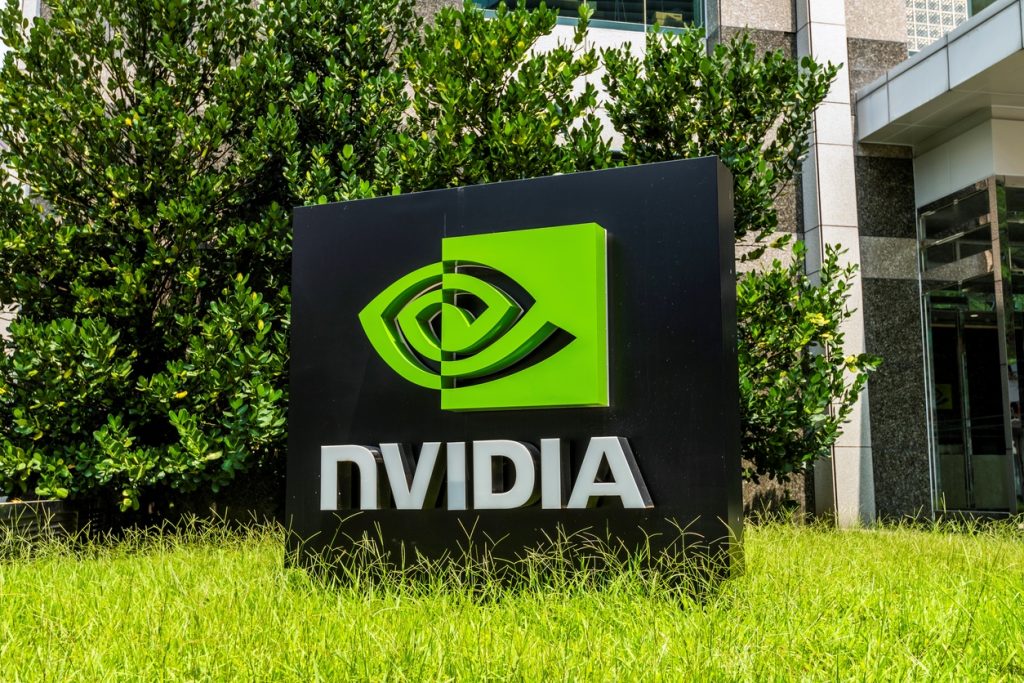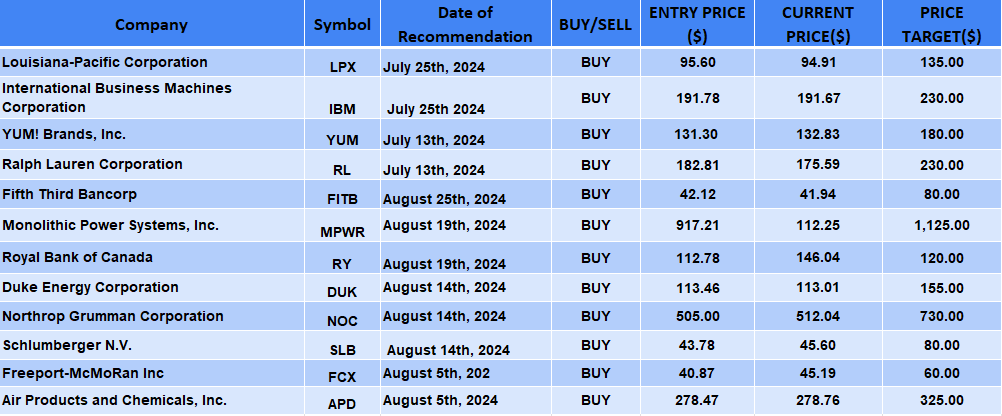
Date Issued – 4th September 2024
Nvidia’s Shares Tumble 9.5% in Unprecedented Single-Day Market Value Decline
Nvidia’s stock plummeted 9.5% in a historic one-day drop, reflecting a broader shift in investor sentiment as enthusiasm for artificial intelligence (AI) technology diminishes amid a general market selloff. This sharp decline came on the heels of a quarterly forecast released last Wednesday, which fell short of the high expectations set by investors. The erosion of Nvidia’s market value signals growing skepticism around the AI-driven market rally that has been a hallmark of this year’s stock market performance. Despite this setback, Nvidia’s shares have still surged 118% year-to-date, though the recent dip raises questions about the sustainability of the tech sector’s rapid gains.
Chip Index Suffers 7.75% Decline Amid Widespread Market Retreat
The Philadelphia Semiconductor Index (PHLX) experienced a significant 7.75% drop, marking its largest single-day decline since 2020. This steep fall underscores the broader market trend impacting technology and semiconductor stocks. The downturn in the chip sector was mirrored across major market indices, with the Nasdaq Composite (.IXIC) falling 3.3% and the S&P 500 (.SPX) declining 2.1%. The decline in semiconductor stocks was further exacerbated by Intel’s (INTC.O) nearly 9% drop in share price, following reports that CEO Pat Gelsinger and other top executives are preparing to present a restructuring plan to the board. This plan includes potential divestitures from non-core businesses and a reassessment of capital expenditures to address ongoing challenges.
AI Investment Concerns Fuel Market Volatility
Recent market volatility has been driven by growing investor concerns over the returns on substantial investments in AI. Research from BlackRock highlights doubts about whether the current wave of AI-related capital expenditures will generate sufficient revenue to justify the investment. This has led to increased scrutiny of how companies are leveraging their balance sheets and capital. The caution surrounding AI investments is further compounded by disappointing quarterly earnings reports from tech giants like Microsoft (MSFT.O) and Alphabet (GOOGL.O), both of which saw share declines following their July earnings releases. These developments contribute to the broader sense of caution in the tech sector, particularly regarding AI-related investments.
Federal Reserve Policy Expectations Weigh on Markets
Current market trends are also being shaped by expectations around the Federal Reserve’s monetary policy. Investors widely anticipate a 25 basis point interest rate cut during the Fed’s upcoming September 18 policy announcement. However, recent data indicating weak activity in the manufacturing sector has increased expectations for a 50 basis point cut, rising from 30% to 37%. This week, additional labor market data will be closely watched, culminating in Friday’s crucial government payrolls report. Steve Sosnick, a market strategist at Interactive Brokers, expressed concerns about potential distortions in job market data due to seasonality and other factors, which could impact the forthcoming numbers.
Nvidia’s Record Loss Surpasses Meta’s Previous Decline
Nvidia’s one-day market value loss has now eclipsed the $232 billion decline experienced by Meta Platforms (META.O) on February 3, 2022, following a dismal earnings forecast. This record-setting loss underscores the intensity of the current market reaction to tech stocks and AI investments. Following Nvidia’s latest quarterly report, analysts have raised the mean estimate for the company’s annual net income through January 2025 to $70.35 billion, up from around $68 billion before the report. Despite these improved earnings projections, Nvidia’s stock is now trading at 34 times expected earnings, down from over 40 times in June, but still in line with its two-year average. Broadcom (AVGO.O), another major player in the chip sector benefiting from the AI surge, also saw a decline, falling 6.2% ahead of its quarterly report set for Thursday.
Roche’s Fenebrutinib Shows Significant Promise in Suppressing Multiple Sclerosis Disease Activity for Up to 48 Weeks
Roche (SIX: RO, ROG; OTCQX: RHHBY) is set to reveal compelling new data at the 40th Congress of the European Committee for Treatment and Research in Multiple Sclerosis (ECTRIMS) in Copenhagen on 18 September 2024. The latest results from the Phase II FENopta open-label extension (OLE) study show that fenebrutinib, an investigational Bruton’s tyrosine kinase (BTK) inhibitor, nearly eliminated disease activity and halted disability progression in patients with relapsing multiple sclerosis (RMS) over a 48-week period.
“Our BTK inhibitor fenebrutinib has shown remarkable efficacy, nearly suppressing all disease activity and halting disability progression in multiple sclerosis patients after just one year of treatment,” stated Levi Garraway, M.D., Ph.D., Roche’s Chief Medical Officer and Head of Global Product Development. “Should these findings be confirmed in our ongoing Phase III trials, fenebrutinib could significantly advance the treatment landscape for those living with multiple sclerosis.”
Key Findings from the FENopta Study
During the OLE period, 96% of patients on fenebrutinib remained relapse-free after one year, with an exceptionally low annualized relapse rate (ARR) of 0.04. There was also no progression in disability over the 48 weeks, as measured by the Expanded Disability Status Scale (EDSS). Brain MRI scans further supported these findings, with 99% of patients showing no new T1 gadolinium-enhancing (T1-Gd+) lesions, indicative of active inflammation. Additionally, the volume of chronic disease burden, as represented by T2 lesions, decreased threefold during the OLE compared to the end of the double-blind period.
Safety Profile and Ongoing Research
Fenebrutinib’s safety profile in the OLE was consistent with earlier studies. The most common adverse events (AEs) in over 5% of patients were urinary tract infections (8%), COVID-19 (7%), and pharyngitis (5%). Serious AEs were rare, with only one patient (1%) affected. A new case of asymptomatic alanine aminotransferase elevation was noted in one patient (1%), which resolved upon treatment discontinuation. Roche is continuing to evaluate fenebrutinib in three ongoing Phase III trials, including the FENhance 1 and 2 trials for RMS and the FENtrepid trial for primary progressive multiple sclerosis (PPMS). Results from these studies, which will assess the broader impact of fenebrutinib on disease progression across the MS spectrum, are anticipated by the end of 2025.
About Fenebrutinib
Fenebrutinib is a highly selective, reversible oral BTK inhibitor, currently the only such treatment under Phase III investigation for multiple sclerosis. It targets both B-cell and microglia activation, potentially addressing the critical unmet needs in MS treatment by reducing both disease activity and disability progression. Its high selectivity—130 times greater for BTK compared to other kinases—may also minimize off-target effects, contributing to a favorable long-term safety profile.
The FENopta Study
The global Phase II FENopta study involved 109 adults with RMS, focusing on the efficacy, safety, and pharmacokinetics of fenebrutinib over 12 weeks. The study’s primary endpoint was the total number of new T1-Gd+ lesions detected by MRI at 4, 8, and 12 weeks. Secondary endpoints included new or enlarging T2-weighted lesions. The study confirmed fenebrutinib’s ability to penetrate the central nervous system (CNS) and its potential to influence chronic progressive disease mechanisms. Following the initial 12-week study, patients were invited to participate in the OLE, which extended fenebrutinib treatment for up to 192 weeks. Out of 99 patients who entered the OLE, 96 remained after one year, continuing to show promising results.
Roche’s Commitment to Neuroscience
Roche remains deeply invested in advancing neuroscience research, with a robust pipeline addressing various neurological disorders, including multiple sclerosis. By exploring groundbreaking science, Roche aims to develop transformative treatments that significantly improve the lives of those affected by chronic and debilitating neurological conditions.
About Roche
Founded in 1896, Roche has evolved into the world’s largest biotechnology company and a global leader in in-vitro diagnostics. With a commitment to scientific excellence, Roche strives to discover and develop innovative medicines and diagnostics that save lives. The company has been recognized for its sustainability efforts, consistently ranking as one of the most sustainable pharmaceutical companies in the Dow Jones Sustainability Indices for fifteen consecutive years. Roche remains dedicated to enhancing access to healthcare worldwide, working alongside local partners to make a meaningful impact on global health outcomes.
India’s Services Sector Growth Hits Five-Month High in August, PMI Reveals
India’s services sector experienced its strongest growth in five months during August, driven by robust demand and easing inflationary pressures, according to the latest survey data. The HSBC Final India Services Purchasing Managers’ Index (PMI), compiled by S&P Global, climbed to 60.9 in August, up from 60.3 in July, surpassing the preliminary estimate of 60.4. This marks the highest PMI reading since March and continues a trend of expansion, with the index remaining above the 50-point threshold that separates growth from contraction since August 2021. The latest figure also exceeds the long-run average, highlighting the sector’s sustained momentum.
“This growth was primarily driven by a surge in new orders, particularly from the domestic market,” noted Pranjul Bhandari, Chief India Economist at HSBC. The new business sub-index saw a slight uptick from July, reaching a four-month high and staying well above its historical average. While international demand remained strong, the pace of growth slowed significantly, hitting a six-month low. Business confidence, although still positive, declined to its lowest level in over a year, as firms remained hopeful about demand resilience but cautious about future growth prospects.
Hiring activity in the services sector continued at a solid pace, despite slowing to its weakest level since April. Cost pressures increased moderately in August due to higher expenses related to food, labor, and transportation. However, the rate of input cost inflation for service providers dropped to a four-year low.
“On the bright side, input costs rose at their slowest pace in six months across both manufacturing and services, leading to a reduction in output price inflation in August,” Bhandari added. This easing of inflationary pressure allowed firms to pass on costs to clients at a much slower rate than in July.
Recent data showed that India’s inflation fell to a near five-year low of 3.54% in July, largely due to a high base effect, which suggests that the slowdown may be temporary. A Reuters poll forecasts that inflation will average 4.2% this quarter and 4.6% in the next.
While the manufacturing PMI dipped to a three-month low of 57.5 in August, the strong performance in the services sector helped keep the overall Composite PMI steady at 60.7, unchanged from July.



